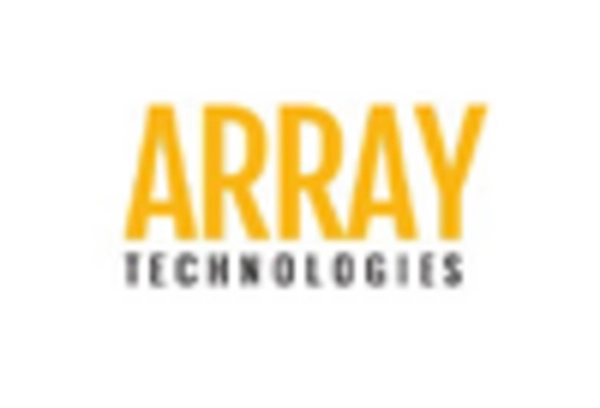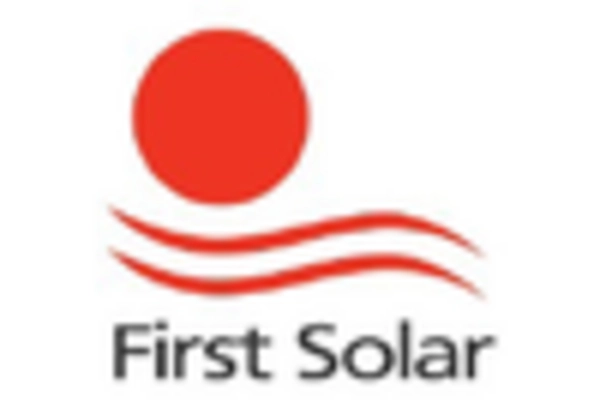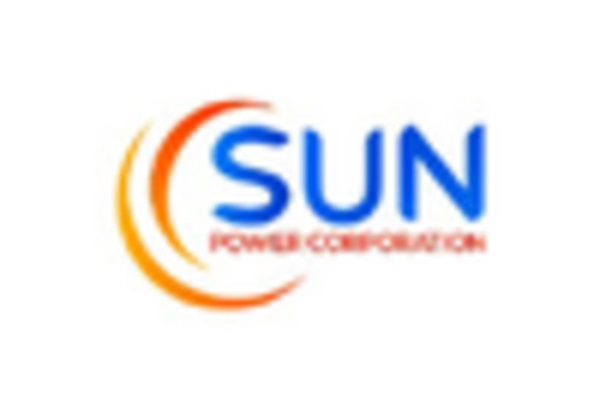Economic Viability of Solar Energy
The Commercial and Industrial Solar Tracker Market is increasingly recognized for its economic viability, particularly as the cost of solar technology continues to decline. The levelized cost of electricity (LCOE) from solar energy has decreased significantly over the past decade, making it a competitive alternative to traditional energy sources. This trend is further supported by advancements in solar tracker technology, which enhance energy capture and efficiency. As businesses evaluate their energy options, the financial benefits of solar energy become more apparent, leading to a greater willingness to invest in solar tracking systems. This economic rationale is likely to drive further growth in the Commercial and Industrial Solar Tracker Market.
Corporate Sustainability Initiatives
The Commercial and Industrial Solar Tracker Market is influenced by the growing trend of corporate sustainability initiatives. Many companies are setting ambitious sustainability goals, including achieving net-zero emissions and increasing their reliance on renewable energy sources. This shift is prompting businesses to explore solar energy solutions, particularly those that incorporate solar tracking systems to maximize energy production. As organizations recognize the importance of aligning their operations with sustainability objectives, the demand for efficient solar technologies is expected to rise. This alignment between corporate strategies and renewable energy adoption is likely to propel the growth of the Commercial and Industrial Solar Tracker Market.
Government Support and Regulatory Frameworks
The Commercial and Industrial Solar Tracker Market benefits from supportive government policies and regulatory frameworks that promote renewable energy adoption. Various governments are implementing incentives such as tax credits, grants, and subsidies to encourage businesses to invest in solar technologies. For instance, some regions have established renewable portfolio standards that mandate a certain percentage of energy to be sourced from renewable sources. This regulatory environment not only fosters investment in solar tracking systems but also enhances the overall market attractiveness. As these policies continue to evolve, they are likely to provide a robust foundation for the growth of the Commercial and Industrial Solar Tracker Market.
Rising Demand for Sustainable Energy Solutions
The Commercial and Industrial Solar Tracker Market is witnessing a notable increase in demand for sustainable energy solutions. As businesses and industries strive to reduce their carbon footprints, the adoption of solar energy has become a priority. According to recent data, the renewable energy sector is projected to grow significantly, with solar energy accounting for a substantial share. This shift towards sustainability is not only driven by environmental concerns but also by the economic benefits associated with solar energy, such as reduced operational costs and energy independence. Consequently, the Commercial and Industrial Solar Tracker Market is poised for growth as more companies seek to implement solar tracking systems to optimize their energy production.
Technological Innovations in Solar Tracking Systems
The Commercial and Industrial Solar Tracker Market is experiencing a surge in technological innovations that enhance the efficiency and effectiveness of solar tracking systems. Advanced algorithms and sensors are being integrated into solar trackers, allowing for real-time adjustments based on the sun's position. This adaptability can increase energy capture by up to 25%, making solar installations more economically viable. Furthermore, the introduction of bifacial solar panels, which can capture sunlight from both sides, complements the functionality of solar trackers, potentially leading to higher energy yields. As these technologies evolve, they are likely to attract more investments and drive growth within the Commercial and Industrial Solar Tracker Market.















Leave a Comment